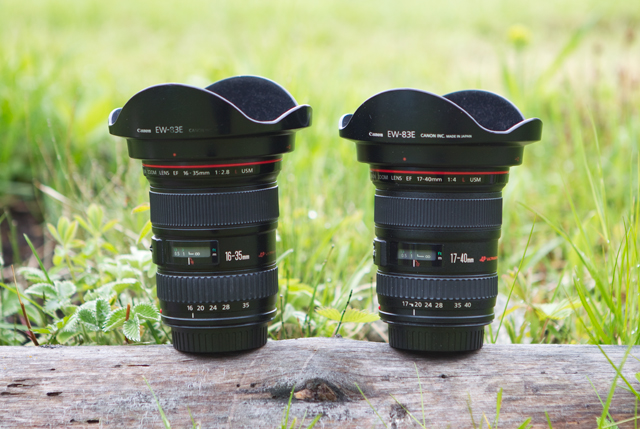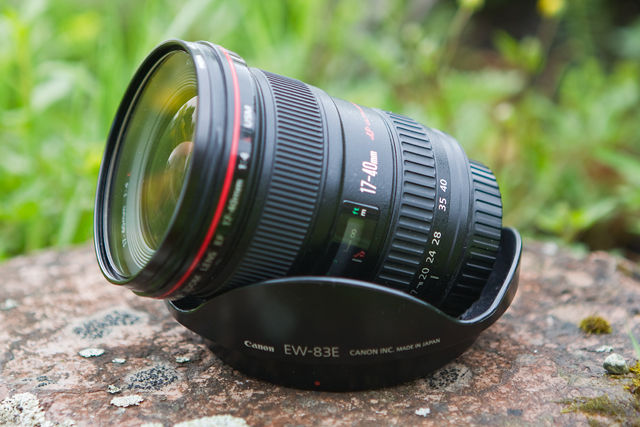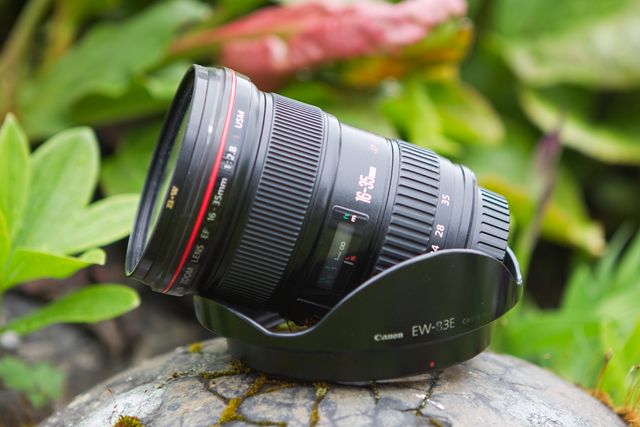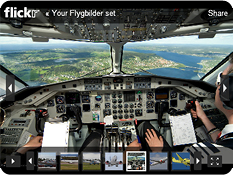Wide-angle lenses are something that most aviation photographers forget to use as a complement to the more common tele lenses. But a wide-angle lens is always good to have in your camera bag and is very useful when shooting on the apron or in a cockpit.
As we have said many times before, there are a lot of various lenses to choose from, but we have decided to take a closer look on two of the most popular wide-angle zoom lenses from Canons line up. The EF 17-40/4 compared to the somewhat heavier and faster EF 16-35/2.8.

These two lenses are very similar but yet very different from one another. The most noticeable difference is the widest aperture and the focal length.
In Ostersund Photography, we have been using the EF 17-40/4 as our primary wide-angle lens in our camera bags since 2008. The reason for this is that it is a high quality L-lens, both in glass and in build, suitable for both full frame and cropped sensor cameras. On the latter, such as a Canon EOS 7D, the equivalent focal length is around 27-64mm and is still considered very wide. Also the price tag is very affordable and significantly smaller than on the EF 16-35.
The lens is weather sealed (as long as you use a filter) and can handle rain pretty good without letting any moist in and the widest aperture of f/4 is more than enough for shooting outdoors on aprons, or in a cockpit with flash. All this combined makes the EF 17-40 ideal for an aviation photographer.

The EF 17-40 was introduced in 2003 and is a very good substitute for the much more expensive EF 16-35.
But what about the EF 16-35? Can the slightly wider and heavier lens with an extra stop for twice the money be the lens for you?
Along with the EF 24-70/2.8 L USM and the EF 70-200/2.8 L IS USM, the EF 16-35 is a must have for every professional press photographer. That line up has the advantage that all lenses have the same maximum aperture of f/2.8 and all produce high quality images. I have shot with all these lenses, both on assignments in the field and at home trying out the gear and I must say that it is a collection of lenses that could make even the saddest man on Earth cry out of happiness. However, it is a pricy bunch of glass that might make you and your wallet cry, too. What needs to be considered is whether you need the extra stop and if you are willing to pay the extra money for it.
Truth to be told, many have had complaints on all of the f/2.8 lenses mentioned above. Many are not as satisfied as one might expect with the sharpness on the widest aperture on some copies and tend to use them on smaller apertures to get the best performance out of them. I myself have encountered this problem on older versions of the EF 16-35, but consider the version two to have improved optical quality. This goes for both the sharpness as well as for chromatic aberration and colour reproduction.

The lens on the photo is actually a EF 16-35 version one, but the lens we tested was the version two.
If we are to compare the EF 16-35 to the cheaper sibling EF 17-40 side by side I honestly can’t motivate the double price of the EF 16-35. ‘Why?!’ I hear you photographers shout at me. Well, to be frank, the only significant difference I can tell by using them is the widest apertures and the focal lengths. And yet again I hear you scream interrogatory, but to me what really matters is how I feel about using the lens. You can sit all day looking and diagrams, reading tables and watching reviews on Youtube, but what it comes down to at the end of the day is whether you can afford a lens or not and if it suits your purposes.
Both lenses are sharp, they are both marked with the red Canon L and they both get the aviation photography job done. I now that I in previous reviews have stated that I prefer the faster lenses over the f/4 ones, but when it comes to the EF 17-40 I’m really satisfied. I really love shooting wide-angle and with the aperture fully open and a f/2.8 lens is really good in low light situations. Still I can’t motivate why I prefer the f/4 17-40. All I know is that I’m currently on my second EF 17-40 and it hasn’t disappointed me yet. I obviously don’t suffer when I shoot with the EF 16-35, but I certainly don’t crave for it.

Jonas Herjeby
Text/photo
jonasherjeby@osdphoto.com












No comments:
Post a Comment